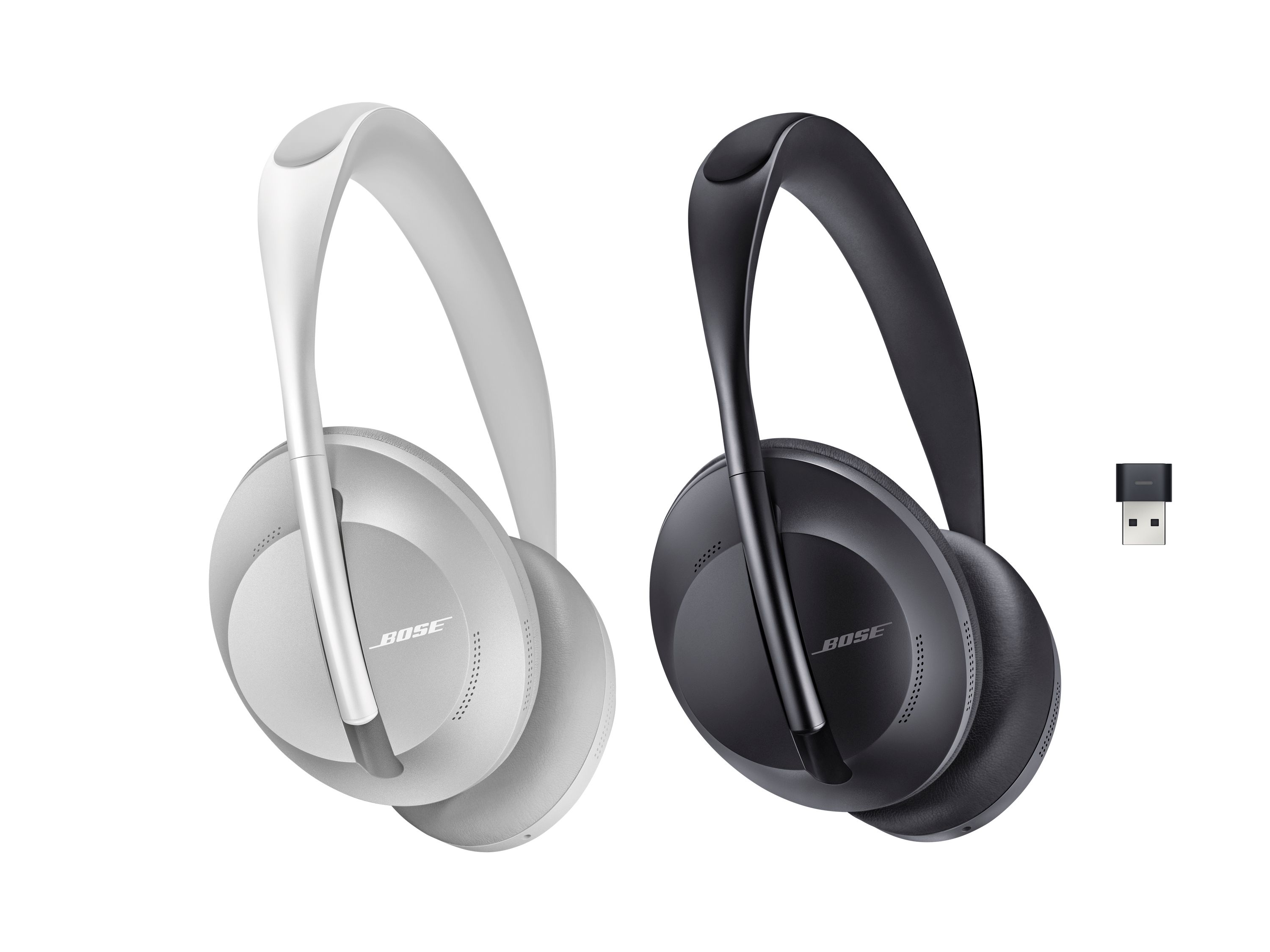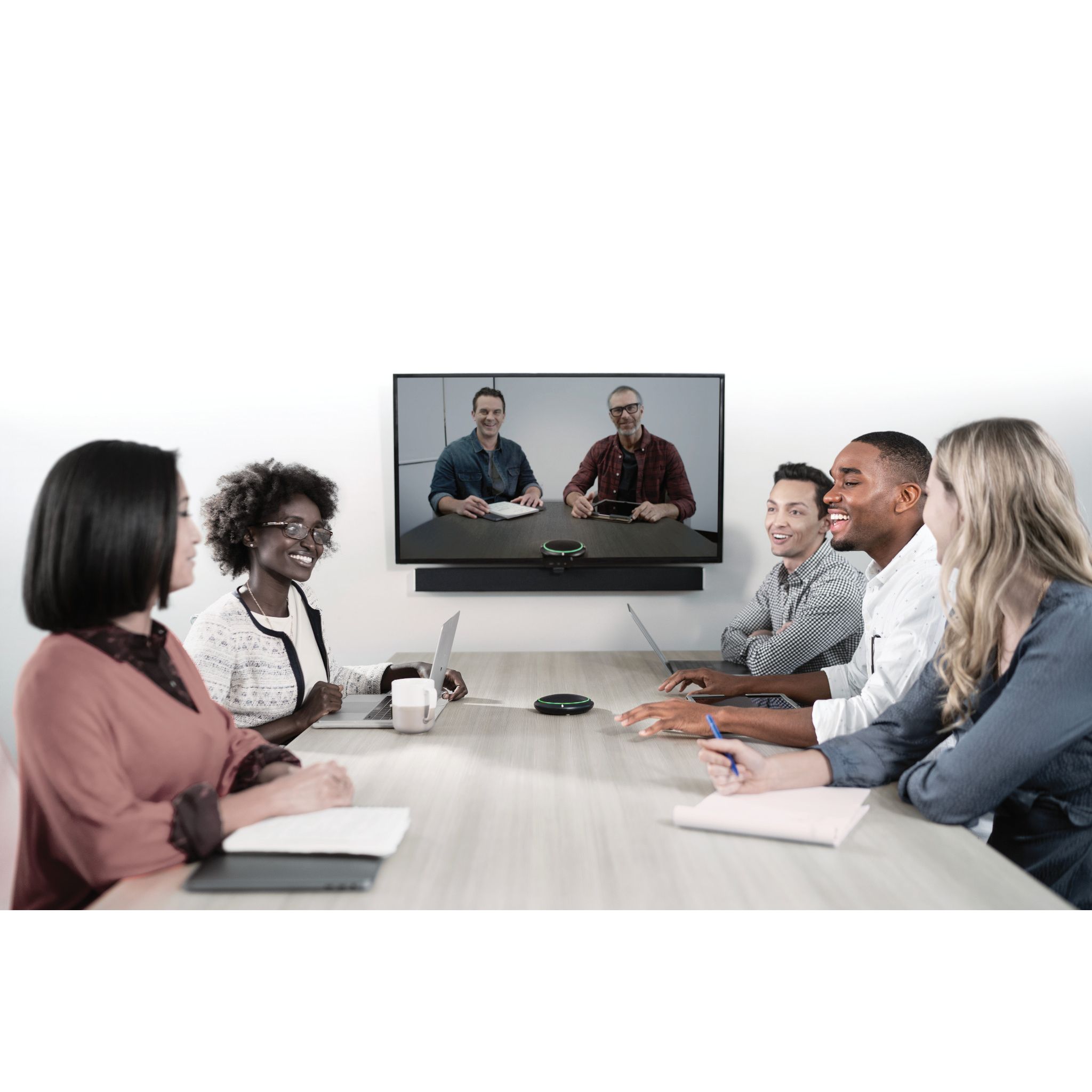The Future of Conferencing Audio
With meeting rooms at the nerve center of many companies, understanding the shifting use and technical requirements of the workspace is essential. So, what does the future hold for conferencing audio and specification?
Workspaces are undergoing a complete transformation as businesses envision a post-pandemic future. With meeting rooms acting as the nerve center of many companies, understanding the shifting use and technical requirements of these spaces is essential. What does the future hold for audio conferencing ?
Scroll through the gallery below to see the latest conferencing audio solutions.

Sennheiser TeamConnect Ceiling 2
Sennheiser’s TeamConnect Ceiling 2 offers high-audio quality for voice and videoconferences. Thanks to its patented dynamic beamforming technology, the array automatically follows the active speaker’s voice, letting people speak at a natural volume whether they are sitting, standing, or walking around the room.

Bose Professional Noise Cancelling Headphones 700 UC
Bose Professional’s Noise Cancelling Headphones 700 UC are now certified for Microsoft Teams, giving Teams customers the assurance that the Bose NCH 700 UC will provide the high-quality experience and compatibility they require.

Shure IntelliMix Room
Shure’s IntelliMix Room is a DSP software that optimizes the performance of Shure networked microphones with videoconferencing software, resulting in better conference room audio all around. It’s designed to run on the same computer as any videoconferencing software, which reduces the amount of equipment in the room.

Stem Audio Conferencing Solutions
A medium conference room setup from Stem Audio includes networkable table speakerphone, wall conferencing array with 15 mics performing beamforming, and a 100-microphone ceiling array.
Touchless Audio
“It’s all about touchless audio,” said David Missall, technical application engineer manager at Sennheiser’s business communication division. “In today’s office environment, the question on every AV and IT professional’s mind is how to make meeting spaces, presentation rooms, and classroom technology as safe as possible. As hygiene is an important factor for all organizations in the wake of COVID-19, there is an urgent need to eliminate AV integrations with shared microphone and headphone technology.”
[Sennheiser on Audio's IP-Centric Future]
There are many options for corporate and education environments having to adapt to COVID-19 recommendations, such as Sennheiser’s TeamConnect Ceiling 2 microphone array technology, whose beamforming technology makes it suitable for environments with social distancing.
“It eliminates the need for multiple microphones in a meeting, presentation, or classroom space by automatically tracking the person who is speaking at that moment. It is also certified for Microsoft Teams and is compatible with Zoom, enabling high-quality audio collaboration for increasingly remote workforces and classrooms,” added Missall.
While conferencing audio is impacted quite a bit by the space the audio has to operate in, Martin Bodley, director and global head of Bose Work, argues that how we work is becoming more important in choosing an audio solution than the particular work space.
A daily selection of the top stories for AV integrators, resellers and consultants. Sign up below.
[Bose on AV in the Post-COVID World]
“Given the impact COVID-19 continues to have on how we work and collaborate, we’re going to see conference room use rolled out in a phased approach, depending on what state you are in. Now more than ever, people need products that will support the flexibility and diversity needed for the variety of work locations—whether in a remote locale or spread out in an office space,” he explained.
The Bose Noise Cancelling Headphones 700 UC were built with the future of work in mind. “This is the kind of transparent technology integrators will fold into the solutions they offer as it becomes increasingly integrated. For example, someone using the NCH 700 UC will have the choice of moving into a larger meeting room to participate on a video call via products like the Bose Videobar VB1 all-in-one conferencing device or stay where they are and join using their NCH 700 UC—whichever fits their needs at the moment,” continued Bodley.
Working to Capacity
As companies begin to welcome employees back into the office, conference rooms will be used differently. “We won’t see people filling conferencing spaces to capacity. Integrators will need to ensure their customers’ technology will work for employees who are physically spread out more within the same space. Beam-steering microphones, like those found in the Bose Videobar VB1, will have a greater advantage than mics with static lobes. The VB1 can actually track down people talking with its hunter beam, ensuring each participant can be heard clearly and is not lost in background noise,” said Bodley.
The same goes for loudspeakers. “To ensure that what is being said can be easily heard by all participants, directing sound efficiently and in the right direction will be key. The Bose Professional EdgeMax in-ceiling loudspeaker, for example, is ideal for the edges of a meeting space because it directs the sound toward the occupants, not against the walls. Using the Bose ES1 ceiling audio solution—which includes the EdgeMax loudspeaker, a Bose ControlSpace EX-440C conferencing DSP, a PowerSpace P2600A amp, and a Sennheiser TeamConnect Ceiling 2 loudspeaker—ensures meeting participants are heard clearly, and the room is Microsoft Teams-certified out of the gate.”
Chris Merrick, director of global systems marketing at Shure, also anticipates changing requirements for conferencing audio. “Travel restrictions will likely continue, so face-to-face meetings may be replaced by online collaboration. Huddle rooms and conference rooms will be as popular as ever, with one or maybe a few people in the room due to social distancing. Quality audio capabilities and ease of use will be critical.”
[Shure Audio Ecosystem For Conferencing]
This means organizations will need to equip teams with the right products for home conferencing, and equip offices with gear that facilitates distancing and improves the experience for remote attendees—from earphones or headphones to USB mics and touchless array mics in conference rooms, according to Merrick.
“It is more important now than ever before that integrators are able to scale and customize audio pickup in conference rooms. With fewer people allowed in meeting rooms at one time, your audio must cover the room adequately to accommodate larger spaces, with a conference room ecosystem that gives you freedom to scale your audio and customize it based on the needs of each room,” added Stem Audio director of marketing Ryan Root.
Well Integrated
Audio networking will continue to have an impact on conferencing audio. “With audio over IP becoming a new standard, the associated capabilities will continue to far exceed USB audio solutions. Networkable audio gives you the ability to manage an entire organization remotely, identify problems before they occur, and push updates automatically to all devices. This way, your ecosystem is constantly strengthening and providing users with the best experience possible,” said Root.
After all, conferencing audio is an investment. “Technology changes quickly, and having a system that grows with the user and has a strong customer support system in place is extremely important,” added Merrick.
“Our engineers work closely with customers to understand evolving business needs and provide the right solutions. For example, Shure’s IntelliMix Room is a software-based DSP that no longer requires hardware, which frees up space in conference rooms. These systems can be set up with the touch of a button. Working with partners like Logitech helps us provide better-integrated solutions for customers. Another challenge for some businesses is cost. The good news for smaller businesses is that the technology is scalable. If you have one or two huddle rooms, you can outfit them with the same quality technology as major corporations. Many focus on video, but without quality audio, those meetings can’t really function. And the ability to have great audio for virtual meetings isn’t limited to large companies,” stated Merrick.
Keep It Simple
A recent survey conducted by Shure with Illuminas found that 81 percent of business professionals believe flawless audio would improve the quality of their virtual meetings, effectiveness, and overall user experience.
“For many businesses, if the key conduit to conduct business is obstructed, it can negatively impact the bottom line,” added Merrick.
Ultimately, simplicity is key when it comes to system design and integration. “Conference audio is expected to be as simple as possible now. As personal technology and devices are intuitive and seamless, the same experience is increasingly being expected of business solutions and classroom technology. Everything is driven by the end user, and they want plug-and-play products with a user-friendly interface and built-in automation,” said Missall.
Achieving simplicity with this level of audio is not as easy as it sounds. “The most common misconception is that it is easy to achieve good audio. A lot of the time, audio is an afterthought of an install. In reality, it is the most important factor and can make or break the user’s experience.”
Ledetta Asfa-Wossen is an education, technology, and business journalist.
